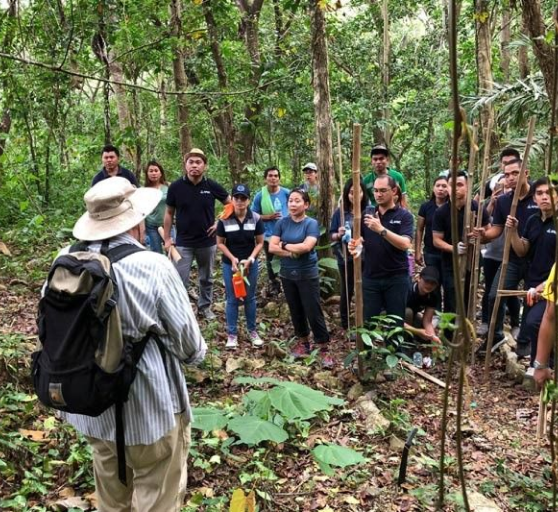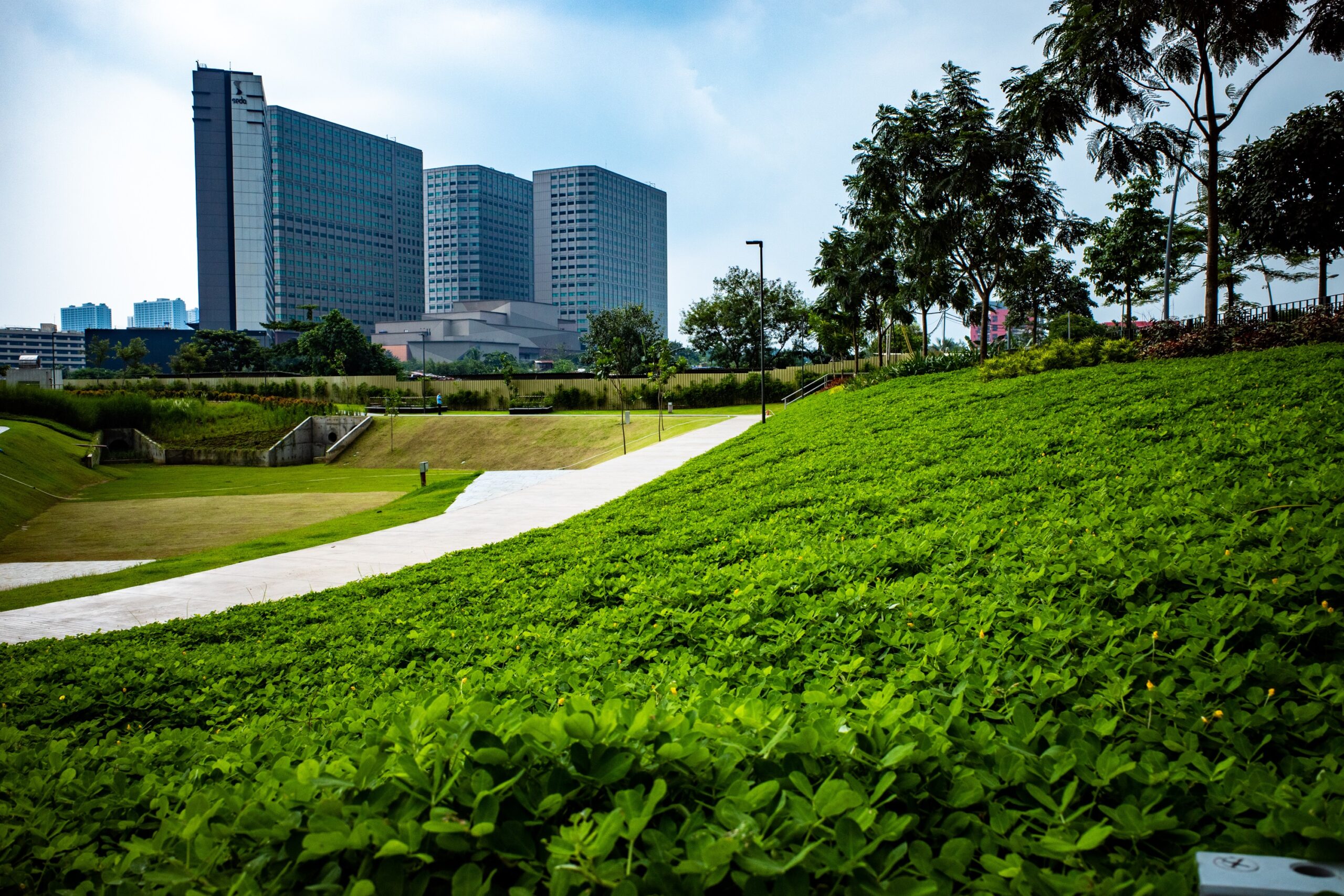Upholding Sustainable Real Estate Development in the Philippines
Introduction
Ayala Land, Inc. is known for its solid reputation and commitment in leading eco-friendly practices and embracing sustainable living. Its dedication to sustainable development is evident through its implementation of groundbreaking strategies that not only reduce environmental harm but also improve the overall well-being of the community.
Sustainability has become a critical consideration in the real estate sector, as the industry grapples with the challenges of climate change and resource depletion. The need to reduce carbon emissions, conserve energy, and protect natural resources has never been more urgent. Realizing the significance of sustainability, Ayala Land has made it a core principle in all its projects.
Steps to Positive Change

JOURNEY TO NET ZERO
Ayala Land and AC Energy jumpstarted their synergies in Alaminos through pioneering a Sustainability Hub where Alaminos Solar is surrounded by Carbon Forest
Ayala Land’s Commitment to Sustainability
Ayala Land upholds its commitment to being a leading sustainable developer by incorporating green building practices, promoting energy efficiency, and fostering eco-friendly lifestyles across its diverse portfolio of real estate developments.
Integration of sustainable practices in development, operations, and management
For decades, Ayala Land has been dedicated to preserving the environment and forwarding sustainable development in the Philippines. As we manage our businesses, our growth and expansion are supported by our constantly evolving policies and practices that respond to economic, environmental, and social issues that are of interest to our stakeholders — aligned with and supportive of the United Nations Sustainable Development Goals. We continue to monitor concerns such as climate change, resource efficiency, local economic development, and corporate governance to guide and improve our sustainable development programs in the Philippines.
Our sustainability practices have then transformed from primarily addressing risks and efficiency issues to tackling areas that provide more value and opportunities to the business, the society, and the environment. As we continue to redefine our concept of sustainable development in the Philippines, we also look for more ways to differentiate the brand, innovate property development in the Philippines, and promote a sustainable society.
As such, we have created a committee dedicated to projects and initiatives aimed to improve our methods in uplifting the environment and sustainable development in the country. Our governance structure oversees the prudent management of our resources, our environmental footprint, our engagement with various stakeholders, and our overall efforts in bringing a positive impact on society.

A Future to Look Forward To: Sustainable Development in Real Estate
Sustainable real estate development is the seamless overlapping of adaptive architecture and green design; one that enables cities and residential or commercial spaces to be safe and inclusive, given that it incorporates urban and environmental planning.
In the real estate sector, sustainable development can be a number of things – from the use of environment-friendly building practices to “greenhabbing” and meeting certain economic and social criteria. Using the environment as the most essential factor in property development, the framework of a sustainable design can integrate a variety of features.
Through the implementation of construction materials that reduce a building’s carbon footprint, alongside strategies such as passive green design, solar energy, and rainwater harvesting, sustainable development in real estate elevates the property sector and overall quality of life.
Designing and Building Sustainable Buildings
As mentioned earlier, designing and constructing a sustainable infrastructure project necessitates specific methods and practices that characterize the integration of green building standards and adaptive architecture. This can include strategies that emphasize passive energy-saving and active power-generating features in the building. From the conceptualization phase to the designing and constructing processes, this integration should be a continuous development – it carries over post-construction through regular building maintenance.
These designs are rooted in performance, most of which utilize parametric and generative architectural software wherein data plays a significant role. Studying these data sets – such as the site’s location or climate in the area – and shepherding the use of its natural elements towards the building’s design echoes how nature works. This is how sustainable development can efficiently integrate a building or structure into the local environment. Daylighting, shadow control, and passive cooling serve as examples.
That being said, property sustainability champions climate resiliency, among other things, which can include the reduction in maintenance and operating costs, and environmental conservation. This offers sustainable developers and homeowners a range of benefits and advantages:
- The practice of sustainable development is a path towards future-proofing any business, as it optimizes consumption of natural resources while reducing our carbon footprint.
- Sustainable real estate development can also increase the potential for economic growth. Through energy-efficient practices, green homes and buildings sell more as opposed to non-sustainable properties. As an investment, energy-efficient labels and certifications also allow for higher asking prices in the market.
- In recent years, we’ve seen a growing demand for sustainable real estate, given the rising energy costs and trending preference for renewable energy sources like solar.
It goes without saying that sustainable development is more than a real estate trend – it is a path towards a better future, one wherein the health, safety, and well-being of a city and its inhabitants are taken care of for generations.

Successful strides to sustainability
Our developments reflect four sustainability focus areas that have the most impact to society. These are: Site Resilience, Pedestrian Mobility and Transport Connectivity, Eco-efficiency, and Local Economic Development. Our initiatives aim for positive impact on the community and shape a deeper commitment to environment conservation.
See Related Articles2023 Highlights

Site Resilience
Extreme weather conditions, rising sea levels, and other climate change hazards can undermine our real estate products and the communities they serve. To build solid climate resilience, we strengthen our sites so they quickly recover from environmental stress. We screen for geohazards with technical due diligence, provide space for refuge and rainwater absorption, and plant native trees to improve biodiversity and ecosystems.

Resource Efficiency
We use plenty of resources in property development such as energy, water, and materials like steel and cement. To ensure we don’t contribute to the continuing loss of the country’s natural resources, we use them in a judicious and efficient manner to reduce both our materials consumption and greenhouse gas emissions. We also carry out sustainable development programs such as energy and water conservation alongside waste diversion schemes.

Pedestrian Mobility and Transit Connectivity
Mobility and connectivity are central to our masterplanned communities to ensure that people are provided with safe alternatives to motor vehicles. By creating pedestrian-only areas, highly accessible walkways, transit stops and terminals, we provide abundant opportunities for walking and commuting. These not only expand business development and work opportunities, we also help contribute to a healthier environment by reducing oil consumption and improving air quality.

Local Economic Development
As Ayala Land continues to build large-scale, masterplanned, and mixed-use estates across the Philippines, we generate progress and growth for both businesses and employees at each step of the development cycle. We contribute to nation building and create value for the entire community through various ventures such as prioritizing local hiring, investing in skills training in the areas we develop and operate, and allocating spaces in our malls for homegrown businesses to prosper.

Carbon Neutrality and Net Zero Program
Learn More
Circular Waste Management
Learn MoreESG Assessments and Ratings
Commitment to Net Zero by 2050
Ayala Land made bolder commitments of reducing and removing 100% of controllable emissions within the ALI Group by 2030, and reaching net zero by 2050. With annual ESG reviews, ALI will be able to keep up with the latest requirements and adjust their targets accordingly, in line with these set goals.


